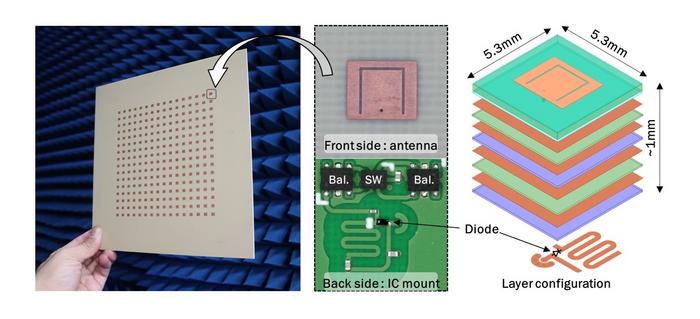Protecting polar bears aim of new and improved radar technology
Research testing new technology to more effectively locate polar bear dens across the Arctic is showing promising results. Researchers from Simon Fraser University and Brigham Young University (BYU), collaborating with Polar Bears International, hope that improving detection tools to locate dens—which are nearly invisible and buried under snow—will help efforts to protect mother polar bears […]

Research testing new technology to more effectively locate polar bear dens across the Arctic is showing promising results. Researchers from Simon Fraser University and Brigham Young University (BYU), collaborating with Polar Bears International, hope that improving detection tools to locate dens—which are nearly invisible and buried under snow—will help efforts to protect mother polar bears and their cubs.

Credit: Photo credit: © Kt Miller / polarbearsinternational.org
Research testing new technology to more effectively locate polar bear dens across the Arctic is showing promising results. Researchers from Simon Fraser University and Brigham Young University (BYU), collaborating with Polar Bears International, hope that improving detection tools to locate dens—which are nearly invisible and buried under snow—will help efforts to protect mother polar bears and their cubs.
Results of a pilot study aimed at improving den location in Churchill, Manitoba—using ARTEMIS Inc., an imaging system that relies on Synthetic Aperture Radar, or SAR—are published this week in the journal URSUS just ahead of Polar Bear Week (Oct. 29 – Nov. 4).
The team found that SAR increased den detection by more than 20 per cent, or 66 per cent, compared with the industry’s current 45 per cent accuracy rate using the aerial Forward Looking Infrared (FLIR) system as a den-detection tool.
“Our airborne imaging radar system has multi-band, interferometric, and polarization capabilities at microwave frequencies able to penetrate snow,” says SFU engineering science professor Bernhard Rabus, who holds an Industrial Research Chair in Synthetic Aperture Radar. “The system can ‘see’ both the top snow surface, the den roof surface and inside the den cavity.”
“While our method is still in its research and testing phase, an operational version is expected to be able to extrapolate from the radar signatures of live bears in the open, combined with computer modelled den cavity radar signatures, to develop a robust match filter detection for airborne multi-channel SAR data to detect polar bears reliably inside their dens.”
Unlike aerial FLIR, SAR technology performs well regardless of temperature and weather conditions, which is crucial in the Arctic, thus SAR may be an effective tool to guide conservation efforts for this vulnerable and iconic species.
“This report advances Synthetic Aperture Radar as a promising method for polar bear den detection, which is critical for protecting polar bears alongside human activity,” says Geoff York, senior director of research and policy at Polar Bears International. “Brigham Young University and Simon Fraser University have been invaluable research partners, and we’re excited about the possibility of SAR in the Arctic as it performs well in all weather conditions.”
David Long, electrical engineering professor and director of BYU’s Center for Remote Sensing, noted that the research provided BYU undergraduate Capstone students “an opportunity to do original research to identify and locate polar bears using radar. This is the first time this has ever been done, and we have great confidence this can be used in the arctic areas to detect polar bears in the snow.”
Denning is the most vulnerable time for polar bears, and with increased industry activity in the region, there is a need for more accurate tools that can detect polar bear dens to avoid disturbing them during this critical time.
Polar bears cubs are born blind with only a light layer of fur to protect them from the cold. They remain dependent on their mothers, living in winter dens under the snow. They are able to emerge from the den in spring when they have grown enough to withstand the harsh Arctic conditions.
A mother bear’s inability to successfully raise cubs contributed to the 40 per cent decline of the Southern Beaufort Sea subpopulation between 2000-2010. A critical part of polar bear conservation is keeping mothers and cubs safe while also addressing other threats such as climate change.
About Simon Fraser University
As Canada’s engaged university, SFU works with communities, organizations and partners to create, share and embrace knowledge that improves life and generates real change. We deliver a world-class education with lifelong value that shapes change-makers, visionaries and problem-solvers. We connect research and innovation to entrepreneurship and industry to deliver sustainable, relevant solutions to today’s problems. With campuses in British Columbia’s three largest cities—Vancouver, Burnaby and Surrey—SFU has eight faculties that deliver 364 undergraduate degree programs and 149 graduate degree programs to more than 37,000 students. The university now boasts more than 180,000 alumni residing in 145+ countries.
About Polar Bears International
Polar Bears International’s mission is to conserve polar bears and the sea ice they depend on. The organization works to inspire people to care about the Arctic, the threats to its future, and the connection between this remote region and our global climate. Polar Bears International is the only nonprofit organization dedicated solely to wild polar bears and Arctic sea ice, and the staff includes scientists who study wild polar bears. The organization is a recognized leader in polar bear conservation. For more information, visit www.polarbearsinternational.org.
Journal
Ursus
DOI
10.2192/URSUS-D-22-00018
Method of Research
Imaging analysis
Subject of Research
Animals
Article Title
Protecting polar bears aim of new and improved radar technology
Article Publication Date
12-Oct-2023
What's Your Reaction?

































